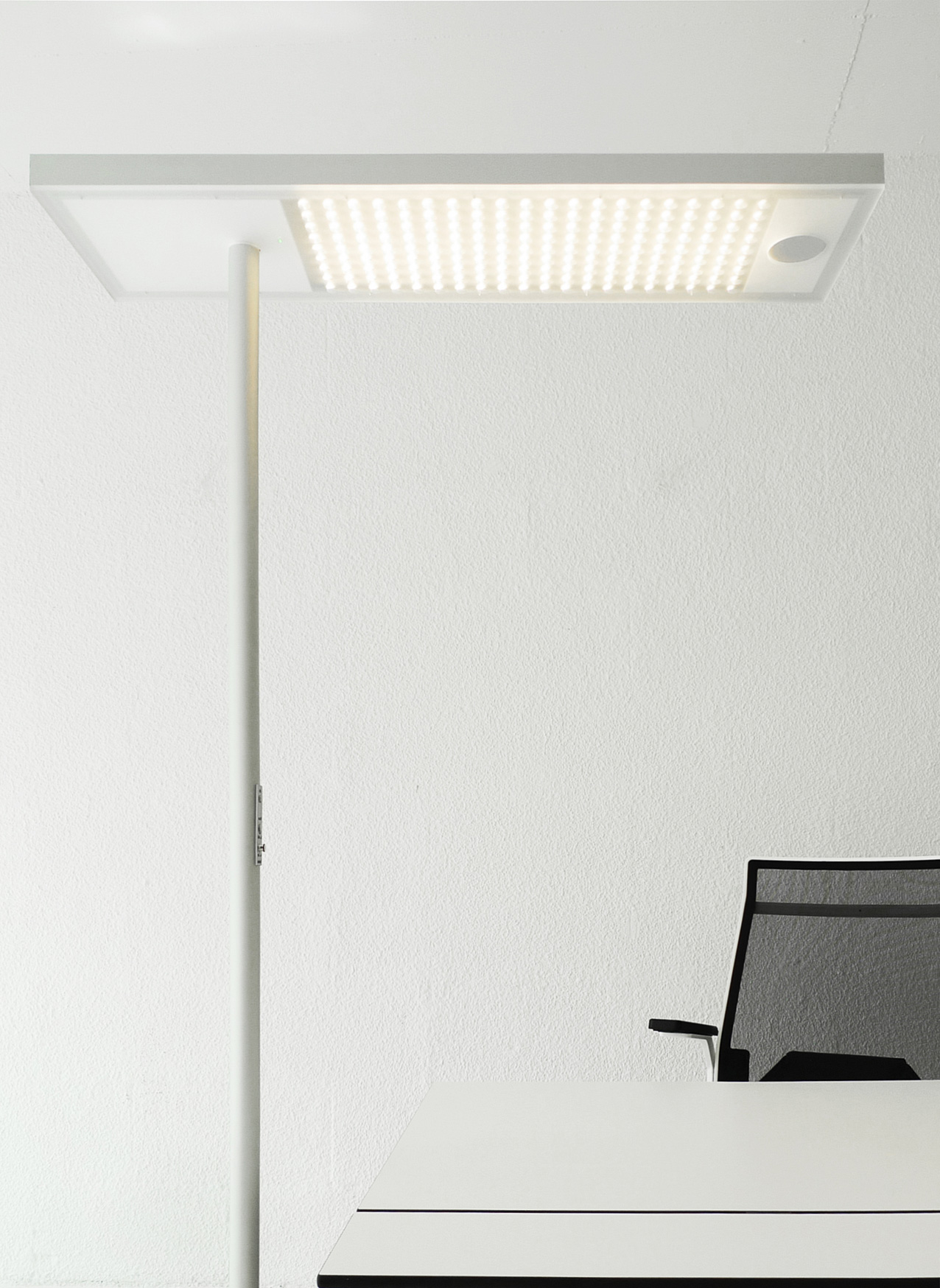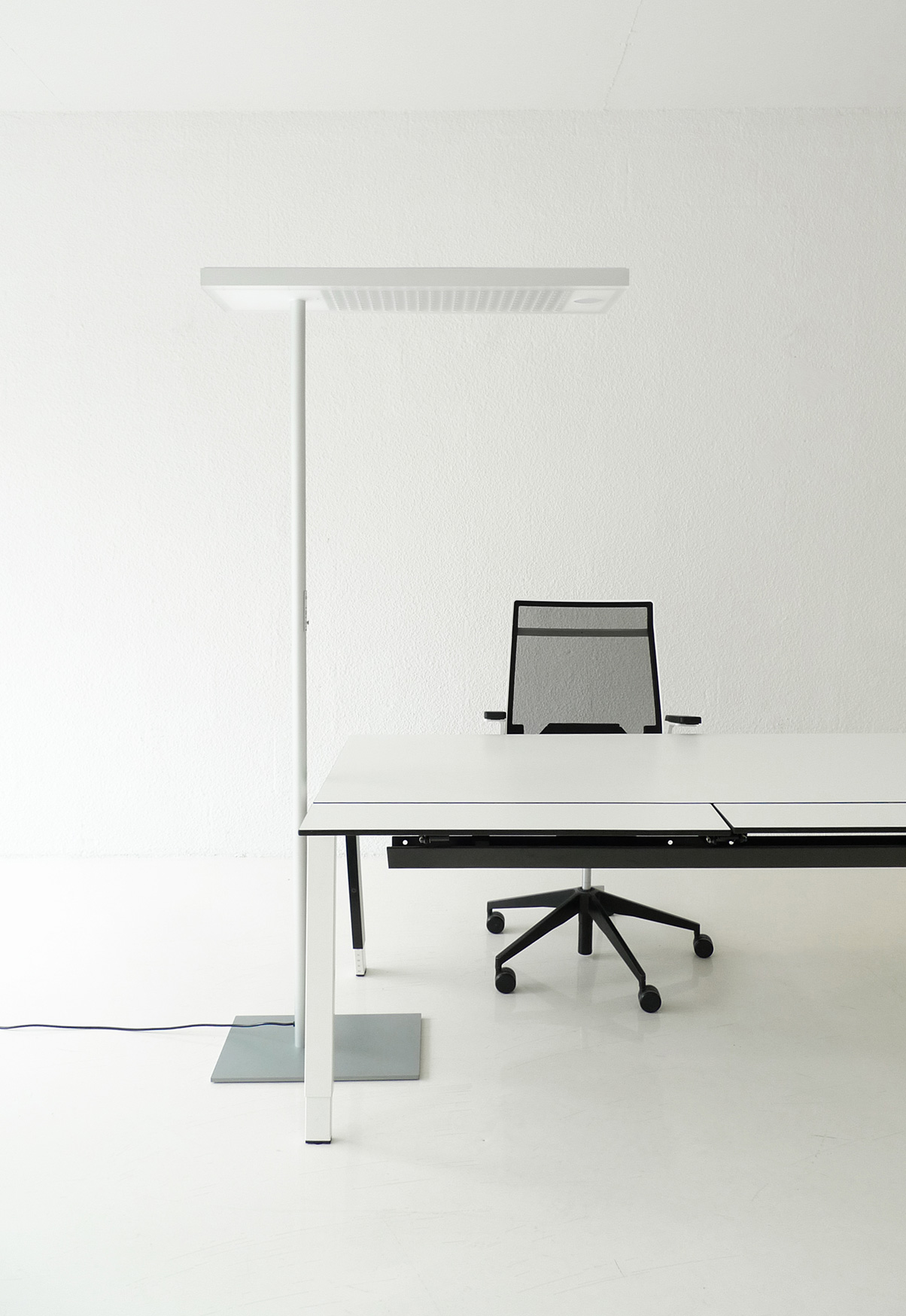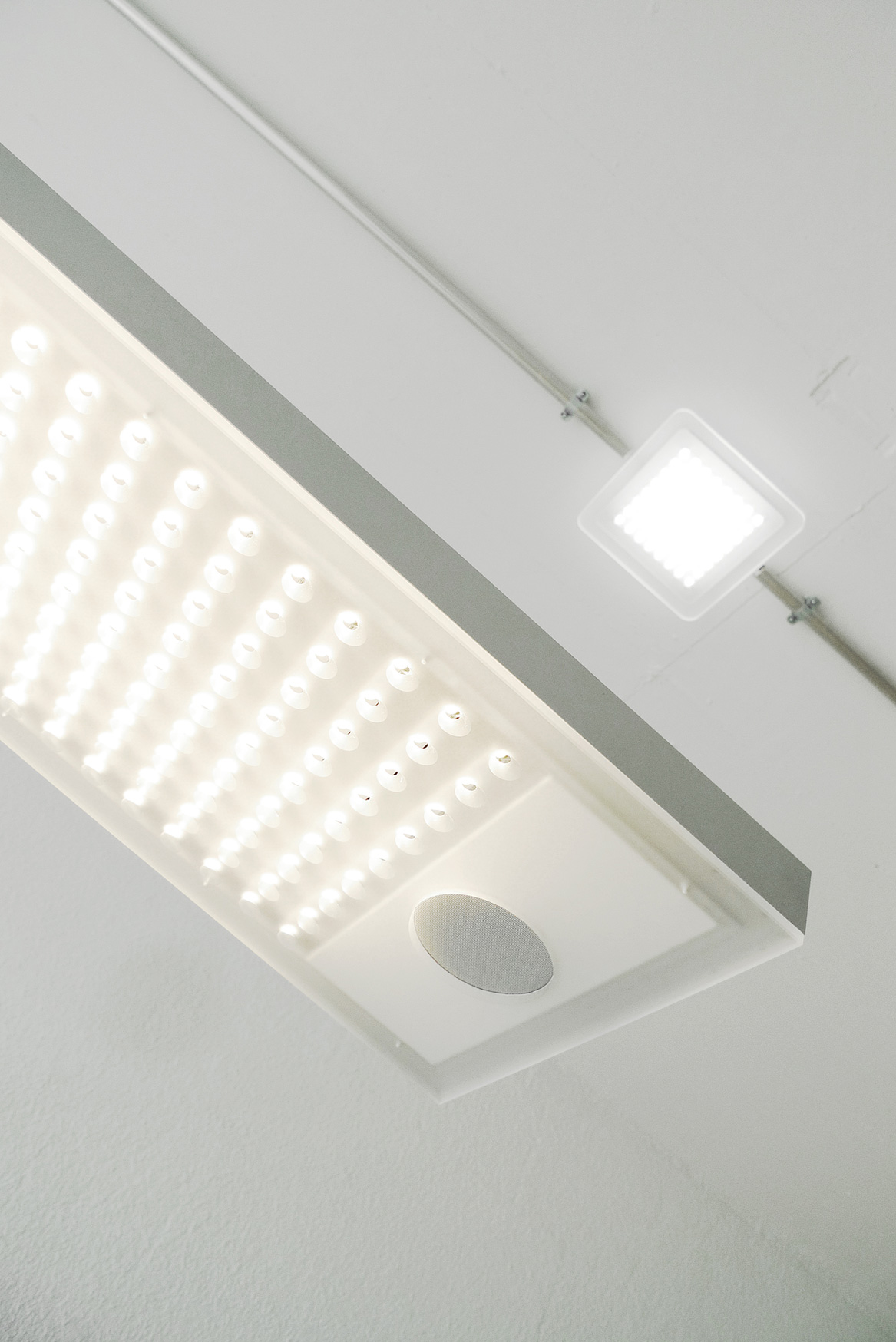


A package of sound-absorbing and sound-insulating measures combined with the so-called sound masking significantly reduces the disruptive effect caused by speech intelligibility in offices. Masking here means that a further sound is emitted which masks the disturbing speech sound, while not reducing the volume of the original sounds.
Anyone working in a multi-person office knows the problem: phones droning their melodies, speech fragments buzzing around, constantly disturbing your thoughts and distracting you from working efficiently. In short: it takes a lot of inner peace and concentration to be able to work effectively in such an office.
Many people can testify to what this means in the daily working routine: In Germany, about 10.5 million people work in offices, and most of them in multi-person offices. The high noise level there not only affects the well-being but also the cognitive performance of the employees, which has been confirmed by Fraunhofer IBP studies in office buildings. The measurement results can be quantified even more precisely in the laboratory.
The researchers tested, among other things, the basic cognitive functions of the test persons, using the established “Serial Recall” test: a number of digits appeared on the computer screen which the participants had to memorize and enter into the computer after some time. The researchers carried out this test both in a quite environment, similar to the environment of an individual office, and in a noisy environment, comparable to the background noise of an office shared by numerous employees.
Result: in a multi-person office, verbal short-term memory worked 10% worse than in a quiet environment, in other words, people forget things they have been told faster. Looking at the average work profile of office and administrative staff, this issue gets particularly relevant. 60% of the time spent working quietly is matched by 25% of work time spent for telephone calls and meetings directly at the workplace. Without appropriate measures, the employees working in silence feel almost constantly disturbed by the speech noise of their communicating colleagues, which is irrelevant to them.
The extent to which phone calls and meetings affect the concentration of other employees depends less on the volume and more on the speech intelligibility. No matter how considerately the colleague may whisper into the telephone as quietly as possible – as long as the sentences are still intelligible for the colleague sitting next to him, he will feel disturbed. A measure for the intelligibility of speech is provided by the “Speech Transmission Index” (STI). This index assigns the value “one”, if the intelligibility is perfect, and the value “zero”, if the speech is incomprehensible. The tests carried out at the Fraunhofer Institute for Building Physics IBP also show how much one’s own ability to concentrate is disturbed by the voices and conversations of the colleagues that you can't avoid hearing. The error rate of the test persons in tests with intelligible speech from the environment was 10% higher (STI of 0.6) than in a quiet office. With an STI of 0.3, the error rate dropped down to 2%, compared with a quiet environment. Shielding measures and sound-absorbing walls are only of limited help for the masking of disturbing sentences and conversations of colleagues. Only a package of sound-absorbing and sound-proofing measures combined with so-called sound masking can significantly reduce this disturbing effect. Masking here means: a further noise is emitted that does not reduce the loudness of the original noise but masks the disturbing speech sound. Thus, the conversations of the colleagues become unintelligible and the basic cognitive functions of the individual employees are hardly affected anymore.
Masking systems are already quite common in North American multi-person offices. These systems consist of a grid of loudspeakers under the ceiling, which radiate a monotone noise evenly throughout the entire office, comparable to the sound of a ventilation system. This system is often perceived as a constant “sprinkling from above”. In Europe, however, it could not prevail. Office users feel that they no longer have any control over their own workplace and are restricted in their need for privacy– which is why they rated the system negatively.
A sound-masking floor lamp for office workplaces has now been designed that overcomes these problems. It has been developed by engineers and psychologists of the Fraunhofer Institute for Building Physics IBP in collaboration with their colleagues from the Stuttgart NIMBUS GROUP. The noise does not radiate unalterably from above. Rather, each workplace is equipped with a floor lamp which offers two advantages: Firstly, the integrated loudspeaker arrangement focuses the noise only on the individual workplace, which means that the employee can control the volume in such a way that he or she feels comfortable. Secondly, the noise significantly masks the conversations and phone calls of colleagues even if they raise their voices or the masking sound is quiet. The floor lamp is therefore well accepted. A prototype already exists and has now been awarded a prize. Its presentation at ORGATEC 2014, the leading international trade fair for modern working environments, attracted a lot of attention.